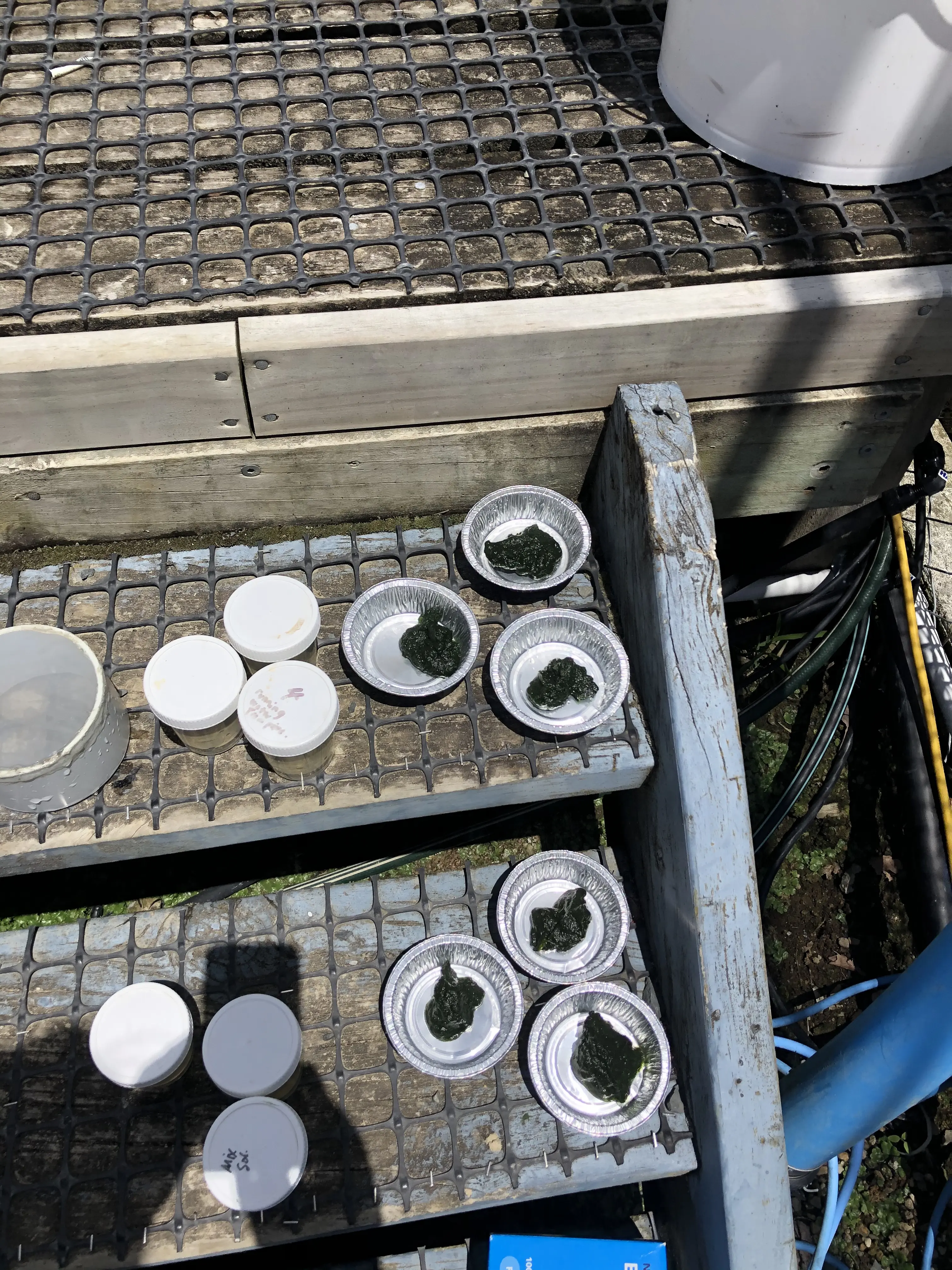Tessa Thomson BLAKE NIWA Ambassador – Freshwater
Kia ora koutou! My first week at NIWA Hamilton has been incredible, and I have learnt so much already. My first day began by meeting Dr Rupert Craggs, who I am spending my two weeks here at NIWA working with. Rupert is a Principal Scientist in Aquatic Pollution, and is also the Programme Leader of NIWA’s water quality programme in the freshwater and estuaries centre. Rupert has two main projects going at the moment that I will be working and helping out on. I have also spent some time working with Tuana Kuka, who is a Wastewater Scientist, and has done some awesome mahi working with iwi and hapū and advocating for their rights and needs in wastewater management. Tuana and Rupert make an awesome team and they are doing incredible things in the wastewater management space.
Throughout my first week I also spent some time at the Ruakura site, which is the NIWA experimental site in Hamilton, where they are growing different types of algae and testing what the ideal conditions are for these different algae to grow in. I worked with Curtis Picken, who is a Water Quality Technician, and helped him with a variety of experiments, including sampling and testing his wastewater mini ponds, to see how they are flowing and working.
The first project Rupert is involved with is a collaborative project with farms and farmers, called ‘Doubling on – farm diffuse pollution mitigation’, and involves developing new technologies and ways of removing nutrients from farm run-off before it enters waterways. One of the ways that the team at NIWA is trying to navigate this is by using filamentous algae to capture the nutrients from farm run – off, and ideally this filamentous algae that is grown from these nutrients can be used either as an organic fertiliser or as a feed for stock.

Algal flow ways at the Ruakura site. Algae is grown in these flow ways with simulated farm run-off water flowing over them, and each flow way is set up slightly differently to test against different variables.

Algae that we dried out, that was to be used in an experiment.

Different algal species that were being grown at the Ruakura site, in their beginning stages.
The second project is called ‘Halving rural and Māori community wastewater treatment costs: mainstreaming novel ecocultural technologies’, and is a really exciting collaboration between NIWA, rural communities, and marae, exploring the different options for effective wastewater management. The main goal is to create wastewater management systems that save rural and marae communities money, reduce the pollution of freshwater resources, ensure that these communities are ‘future proofed’, and that the infrastructure is prepared for growth, and finally to improve te mana o te wai. Another key aim the project has is to come up with a natural, sustainable, and mātauranga Māori informed way of treating wastewater, which I believe is extremely important. The mahi that I have been doing on this project has been awesome and right up my alley.
Similar to the farm run off experiments, Rupert and his team are exploring ways that filamentous algae can be used in wastewater management, however this is in the beginning stages. They are currently exploring several types of wetlands design, some for marae wastewater treatment and some for larger rural communities, and they are also investigating ways of treating the sludge Curtis and I spent time continuing the monitoring of these experiments, where wastewater is pumped into algal ponds, instead of the farm run off like previously mentioned. The goal of this method is to soak up the nutrients in the wastewater before it reaches water ways, just like the farm run off scenario.

Curtis testing the pH, DO, and temperature of one of his mini ponds. This data will be collated with the rest of his data he has on his mini ponds to assess what conditions are having an impact on the algal growth.

Curtis takes a water sample as well as an algal sample, to measure what algae is growing in the mini pond, and the nutrient removal. He takes this sort of data a few times a week to keep a close eye on growth and productivity.
The other part of this project saw us visiting Pōhara marae, one of the iwi project partners, to get a little bit more information on the needs and aspirations of the marae in their wastewater management. We also had a delicious kai cooked by the whānau, and learnt about some of the whakapapa of the area. It was an awesome example of those practising Western Science working closely with iwi Māori to see true vision for their people come to fruition. I am working on a detailed diagram of the systems that are being developed, which should appear in my next blog post!

Our visit to Pōhara marae

Tuana giving a presentation to some of the whānau members of Pōhara marae, to which we discussed different options of wastewater management, and talked about what would be best for their situation.
I have thoroughly enjoyed my first week here at NIWA Hamilton. It has been awesome working alongside Rupert and Tuana, who I believe will change the game when it comes to marae wastewater treatment systems. I cannot wait for the next week and the cool things Rupert has planned. Mauri ora!

Tessa Thomson
BLAKE NIWA Ambassador 2020


